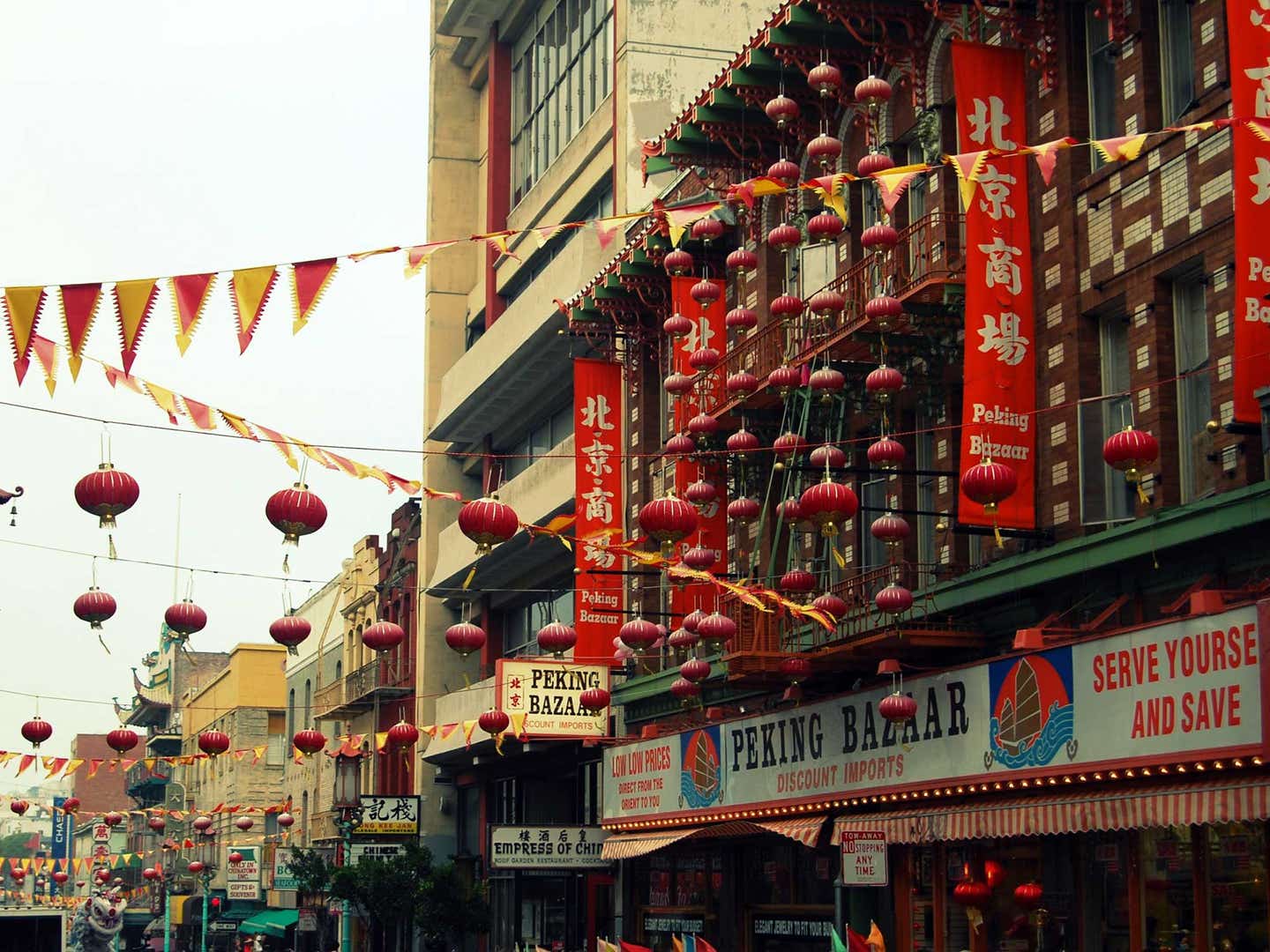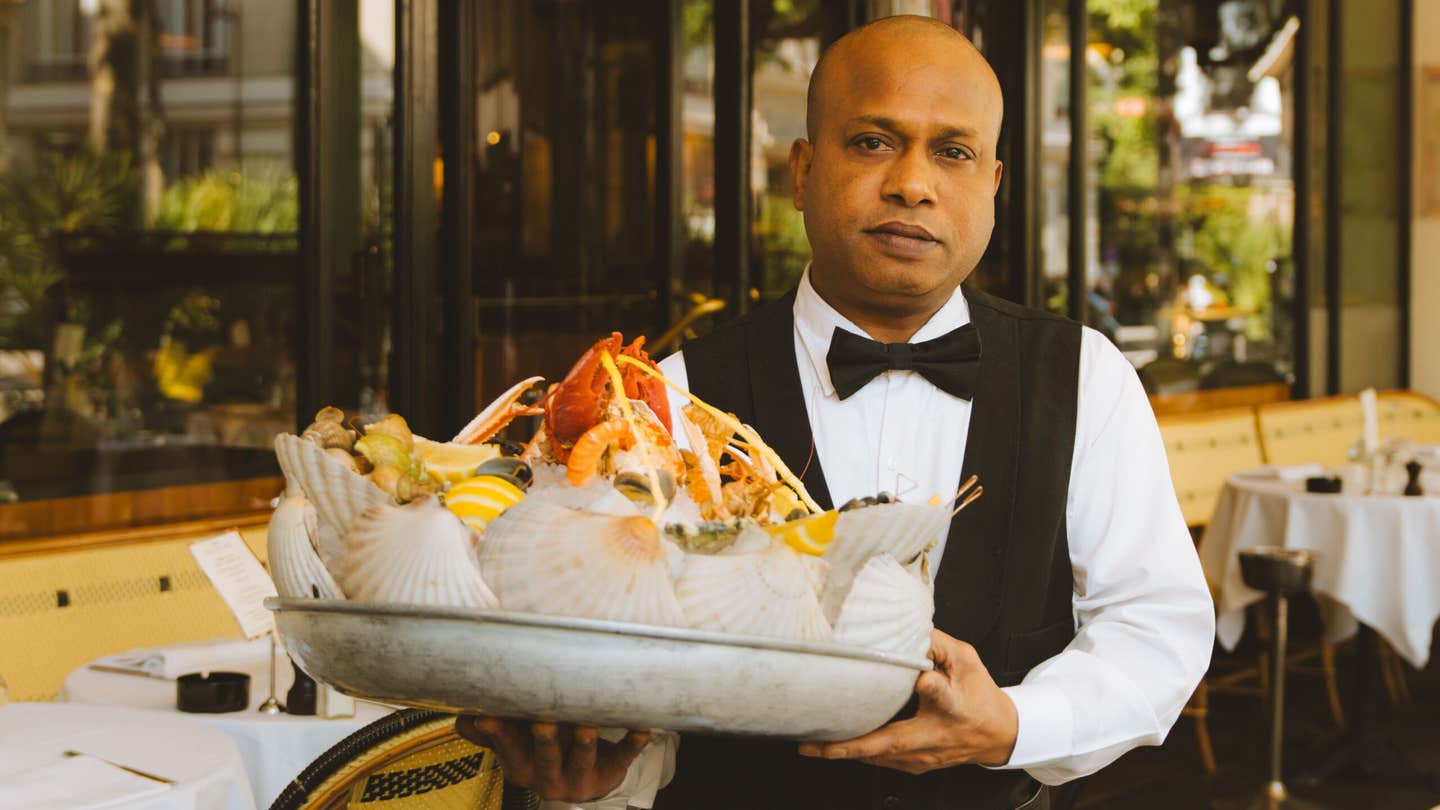
Does promoting "cheap eats" also promote cheap labor? Is food media responsible for enabling the exploitation of people of color? Such are the claims put forth in a recent thinkpiece published on NPR's The Salt. The author, Diep Tran, is the chef and owner behind the Vietnamese-influenced diner Good Girl Dinette, a favorite of Los Angeles' charming, boho-chic Highland Park neighborhood. As Tran explains, her restaurant's acclaimed menu offers an $11 chicken pho topped with sustainably-raised meat, and a $12 banh mi sandwiching market-fresh vegetables. Suffice to say: Good Girl Dinette's grub isn't making it onto the lists of three-buck Vietnamese sandwiches or dollar tacos.
Thankfully, that's all good news: "ethnic" (i.e., as most food publications subliminally define it: food cooked by immigrants of color) should never be pigeonholed as cheap or hole-in-the-wall just because it's historically inexpensive. If a Chinese restaurant or a Vietnamese restaurant—common victims of the cheap-eats moniker—sources premium, sustainably-produced ingredients from local purveyors, the price should certainly reflect that level of quality, and in that regard, Tran has done a great service for these cuisines and I applaud her.
As a first-generation American and food writer, I do take issue, however, with some of the shortcomings of Tran's piece. She levels several pointed criticisms towards food magazines and websites for publishing those aforementioned lists, suggesting that in doing so, we are enforcing "the view of people of color as sources of 'cheap' labor" and enabling immigrant restaurant owners to underpay their workers, building up their own enterprises on the backs of fellow immigrants. While I agree that communities of color, and immigrants specifically, bear the brunt of wage and labor inequality in the restaurant industry, I simply aim to complicate and nuance Tran's assessment as this inequality is in no way limited to "cheap eats" restaurants—it can be just as prevalent in restaurants of all price points and cuisines, including those that tout their farm-raised chickens and artisanal produce.
Furthermore, implicit in Tran's argument is the problematic assumption that all, or even most, immigrant-owned or "cheap-eats" restaurants skimp on fair wages (of course, some do, but without specific data to substantiate it, the narrative falls flat). It also neglects to confront the very real, difficult subject of undocumented immigrants and other disenfranchised workers who form the backbone of not only the restaurant world, but also the agriculture and food processing industries. Sahra Nguyen, first-generation restaurateur behind Lucy's Vietnamese Kitchen in Bushwick, Brooklyn, which made it onto Eater's Cheap Eats guide last year, suggests that for some of these immigrants, more hole-in-the-wall establishments with relaxed policies are the only option to make a living. "Sometimes, a 'cheap' establishment can provide work opportunities for members of the community that other places may not provide if the restaurant requires more experience, schooling, or language abilities," she explains. "Some people need these places to survive, whether through the work opportunity or affordable dining experience." Acknowledging this reality—that certain industries rely on undocumented immigrant labor—does not make it right, but neither does ignoring it.

In a noble, if slightly misguided, attempt to expose these cut-rate, American-Dream eateries, Tran also mentions that they’re usually located “in the city’s immigrant enclaves,” yet she omits the fact that many of them cater to and feed their own, predominantly immigrant communities. Like Tran’s, my family arrived here as war refugees, working minimum-wage jobs in factories, restaurants, and convenience stores to make ends meet. As anyone who’s grown up in a refugee community, or even an immigrant community knows, the local restaurants serve as community centers for fellow immigrants who have a real need for affordable food or simply crave a taste of home. Just take a drive through the restaurants in Houston’s Chinatown, where I spent much of my childhood—you’ll see as many immigrant faces as American ones slurping down those bowls of pho. And that’s been going on long before you could find a cheap-eats guide to every city in America.
But as the power of food media was redistributed among the pre-Internet old-guard and a newly democratized landscape of bloggers and influencers, it made way for a small army of on-the-ground food reporters whose sensibilities aligned less with the restaurant industry and more with the reader. Columns like the New York Times' "Hungry City" were created not only to highlight unsung food cultures, but also give a human face to the people behind them. When I asked Ligaya Mishan, the critic behind "Hungry City," how she avoids falling into the trap of ghetto-izing the restaurants she covers, she explains that she "listens" and gives as much facetime to a cuisine as possible. "It's never just about the food," she says. "That amazing tamale you had one night out of the back of a truck under the elevated train—it could never be as amazing as the story of the person who made it." To give credit where credit is due: many of us who've written these lists have gone out of our way to use names, provide adequate context, and valorize the food heroes who make our affordable food experiences possible.
But here's where I agree with Tran: we, as an industry, have plenty to improve upon. As an overwhelmingly white group, we have had our fair share of dumb, mildly cringe-worthy (see: characterization of immigrants "scurrying," like field mice, through their restaurant), if not flat-out racist incidents in recent memory. But rather than do away with our cheap eats lists—which would only do a disservice not only to the readers we're beholden to as well as to those ramshackle operations for whom better business equals better tips and wages—, we should move to give those establishments and their chefs the same level of in-depth, human-driven coverage as their white-clothed counterparts. Here at SAVEUR, we'll continue telling the stories of the immigrant restaurateurs and refugee entrepreneurs who have not only brought their food but also accessible produce to our communities. Let's highlight those like Tran who choose to showcase their food in more upmarket, if not traditional, settings. Let's vigilitantly denounce those that skimp on paying their workers and abuse them. And like Tran suggests, perhaps we can rethink the term "cheap," like many have done, and replace it with "affordable" or "inexpensive," as unwieldy as that may be.
As journalists, our responsibility is first and foremost to our reader: to not only tell them where they can get a three dollar sandwich, but also to give them the full context behind that sandwich. And if you don't work in food media, well, here's a good starting point: next time you're at your local Vietnamese noodle soup joint, please remember to tip well.
Keep Reading
Continue to Next Story










